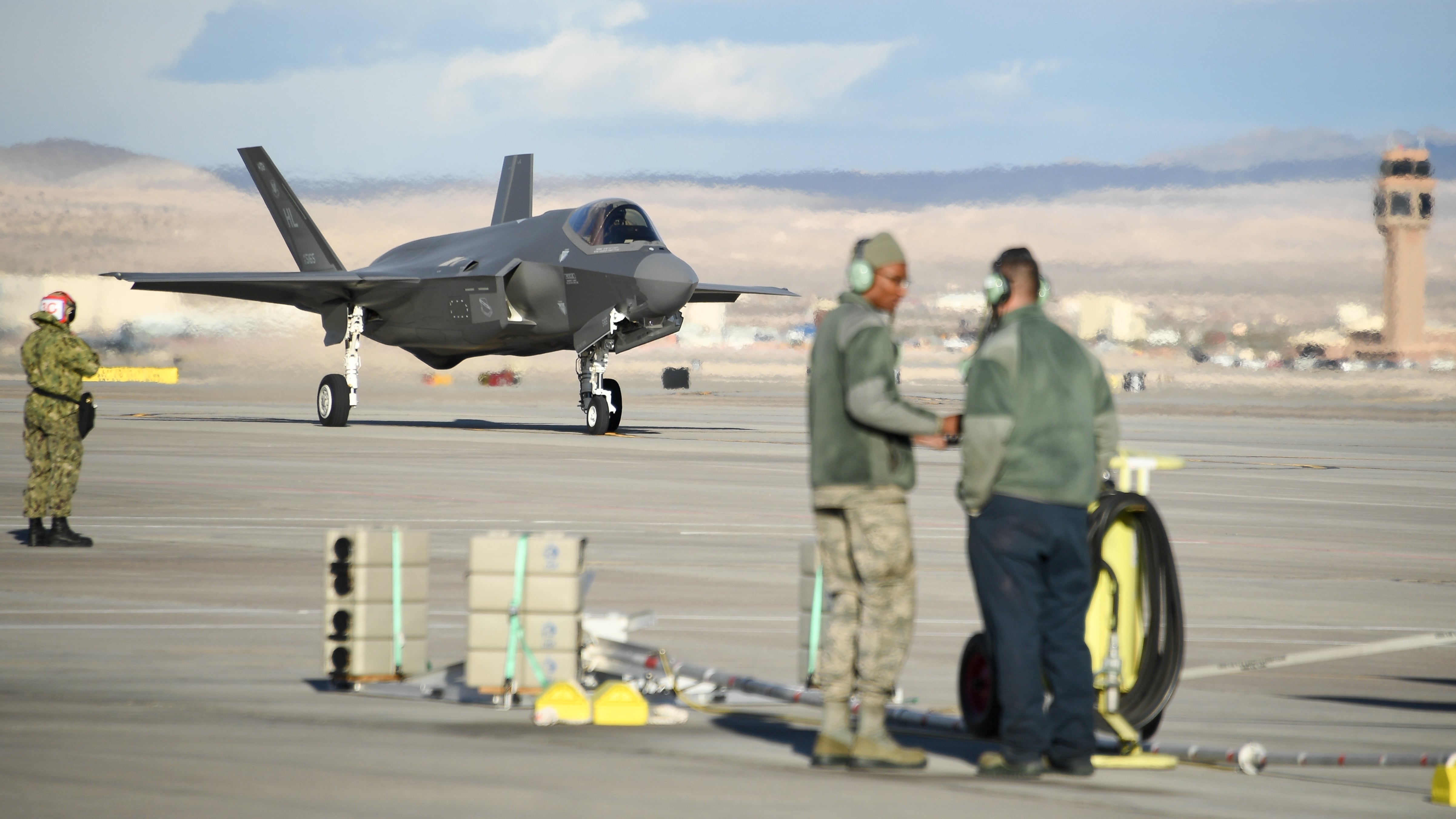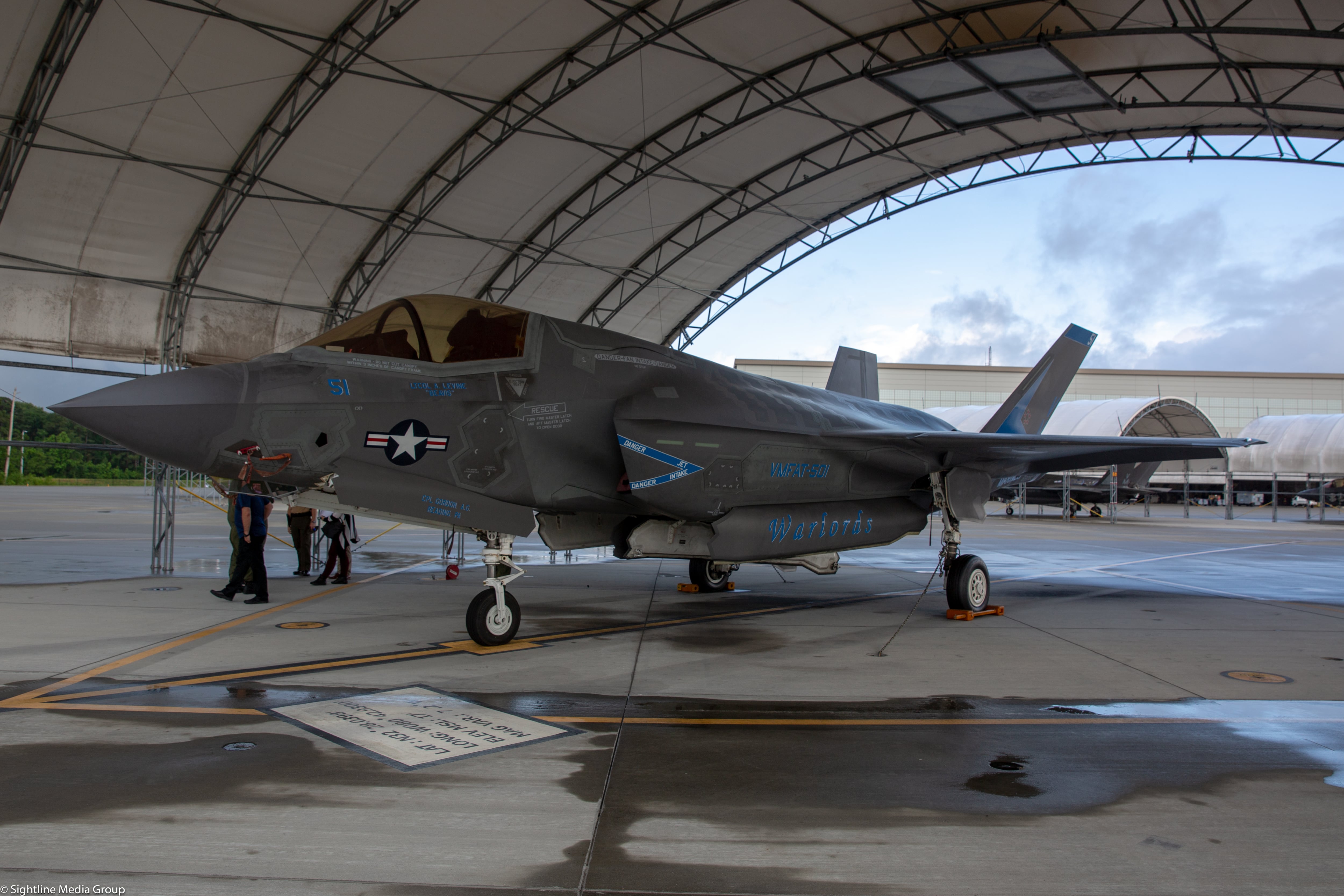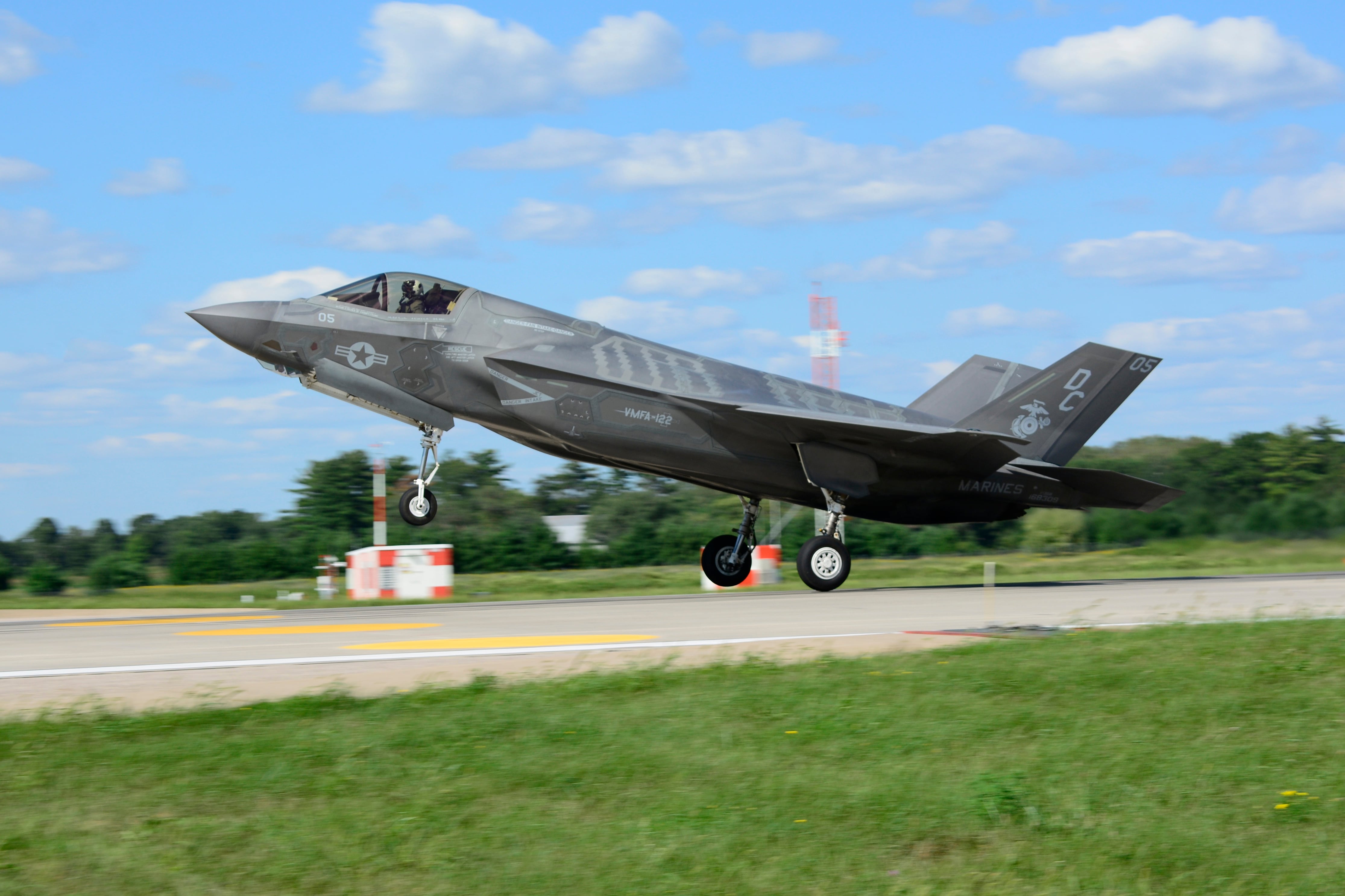EGLIN AIR FORCE BASE, Fla. — The F-35 fighter jet’s logistics backbone has proven so clunky and burdensome to work with that the U.S. Air Force’s instructor pilots, as well as students learning to fly the aircraft, have stopped using a key piece of the system, Defense News has learned.
The Autonomic Logistics Information System, built by F-35 manufacturer Lockheed Martin, was supposed to consolidate training, maintenance and supply chain management functions into a single entity, making it easier for users to input data and oversee the jet’s health and history throughout its life span.
ALIS has been a disappointment to maintainers in the field, with updates coming behind schedule and many workarounds needed so it functions as designed. But the Air Force’s F-35A instructor and student pilots at Eglin Air Force Base, Florida, and Luke Air Force Base, Arizona, were so disappointed with the performance of ALIS’ training system that they bailed entirely, confirmed Col. Paul Moga, commander of Eglin’s 33rd Fighter Wing.
“The functionality in ALIS with regards to TMS — the training management system — was such a source of frustration and a time waste to the instructor pilots and the simulator instructors and the academic instructors that we at [Air Education and Training Command] in coordination with us [at Eglin] and Luke made a call almost a year ago to stop using the program,” Moga said during a Feb. 26 interview.
Moga said the command’s F-35 training squadrons are “not going to start using TMS again until it works.”
RELATED

So in the meantime, F-35A training squadrons have adopted a legacy system, Northrop Grumman’s Global Training Integrated Management System. GTIMS is used by the Air Force, Army and Navy across a number of aircraft inventories to manage training schedules and cut the man-hours and costs associated with doing that work, according to a Northrop fact sheet.
At this point, GTIMS provides a more agile, efficient user experience than ALIS’ training management system, Moga said. But it doesn’t sync with ALIS, so pilots and instructors must do “double data entry” so that each system has a record of flight records, currencies and qualifications.
Even with that headache, using GTIMS is worth not having to deal with ALIS, he said.
“It’s not optimum, but it’s a lot better than it was before just relying solely on TMS,” Moga said. “Because between us and Luke, we couldn’t take any longer having instructors saying: ‘It takes me 45 minutes just to have access to a grade sheet, let alone fill it out.’ ”
The list of problems with ALIS goes back years, with the Pentagon’s independent weapons tester regularly pointing out deficiencies in annual reports. But the Air Force is just starting to get vocal in its exasperation with the system.
At the Air Force Association’s Air Warfare Symposium held last week, Air Force Secretary Heather Wilson turned it into a punchline, jokingly saying: “I can guarantee that no Air Force maintainer will ever name their daughter ‘Alice.’ ”
The line got a lot of laughs.
ALIS, Wilson said, was “a proprietary system so frustrating to use, maintainers said they were wasting 10-15 hours a week fighting with it … and looking for ways to bypass it to try to make F-35s mission-capable.”
It’s unclear whether any of the other U.S. services have followed the Air Force’s decision to abandon ALIS’ training management system.
RELATED

While the Marine Corps does use TMS, it also uses legacy systems like the Marine Sierra Hotel Aviation Readiness Program, or M-SHARP, as well as Advanced Skills Management, said Marine Corps spokesman Capt. Chris Harrison.
A request for comment was not immediately returned by the Navy.
In a statement to Defense News, a spokesman for Lockheed Martin said the company is investing $180 million in ALIS and other data systems through 2021. The company is also working to modernize the ALIS architecture and improve data integrity, speed and automation.
“We’ve heard direct feedback from the user community regarding the Training Management System and are working to improve it. The newest version of TMS contains functionality and user experience improvements, including the ability to customize flexible training plans. This is being fielded in the latest ALIS 3.0 upgrade and we continue to improve the tool in 2019,” Lockheed spokesman Mike Friedman said.
Life with ALIS
On the maintenance side, ALIS is improving … very slowly.
Tech. Sgt. Joshua Wells is an ALIS expediter for the 33rd Fighter Wing. One of two people in the squadron with that title, his entire job revolves around helping maintainers and support personnel use ALIS, and ironing out problems with the system that might occur throughout the day.
Wells takes a pragmatic view on ALIS’ performance. He calls it “a great tool for researching prior maintenance as opposed to digging through hundreds of thousands of pages” of documentation, and said the latest software update in January has led to some positive changes.
The speed of the servers is improving, but only so many ALIS users can use the system simultaneously. At a certain point, a user may have to wait for someone to log off before moving forward, he said.
RELATED

Certain parts on the aircraft have a time limit at which scheduled maintenance or a replacement must take place. The latest ALIS update has sped up the time taken to process that data, “but we still have hiccups,” Wells acknowledged.
Users also continue to see challenges with gaps in the technical data that follows each part or subsystem, like the ejection seat. A 2018 report by the Pentagon’s director of operational test and evaluation noted that Lockheed’s subcontractors on the F-35 do not always input information into ALIS in a standardized way, as they do not use the system. The Air Force has specifically said this problem can cause missed sorties and is one of the top five drivers of non-mission-capable rates.
“They are way better than where they were,” Wells said of the data gaps, adding that he has to call Lockheed Martin personnel “significantly less” for help getting data than he used to with older versions of the system.
While the Defense Department hasn’t spelled out a cohesive plan for ALIS’ future, there are signs the system could change in significant, fundamental ways in the coming years. Naval Air Systems Command, which manages F-35 contracts across the department, put out a solicitation in January for “ALIS Next,” which it envisions as a Lockheed Martin product that “will re-design ALIS in accordance with current information technology and software development best practices.”
The Air Force is beginning to look at that problem through its Mad Hatter effort, which pairs coders from its Kessel Run software lab with F-35 maintainers at Nellis Air Force Base, Nevada.
Currently, Mad Hatter’s developers are building apps that will — hopefully — help to make ALIS more efficient and user-friendly, such as an app to expedite the creation of maintenance schedules. Users at Nellis will then test that app and provide feedback, shaping it into something customized to their needs.
But perhaps even more importantly, the Mad Hatter project has begun the process of hosting ALIS on the cloud, which will allow developers to “triage” code so that what is good and usable is separated from bad code that needs to be reworked, said Will Roper, the Air Force’s top acquisition official.

“There is good code there, but it’s good code in a fairly bad user interface and a bad architecture — bad in the sense that it’s 1990s technology and we’re in 2019,” he told Defense News in February.
“As they go through the code, think of it as apps in a smartphone, knowing that it’s an old phone that needs to improve. So we’re eventually going to ditch the ’90s flip phone, re-host on a modern smartphone, and we want to know what apps are pretty good to use, what apps can be used in part with reuse, and what things we need to recode,” he said. “It’s early, but so far a lot of the code appears reusable down at the app level.”
Despite all the problems, Wells is hopeful that the system will continue to improve. When this reporter asked if ALIS’ problems were just growing pains, he gave a resigned laugh.
“Long growing pains, but yes,” he said.
Edited on 3/11/19 to correct Col. Paul Moga’s title.
Valerie Insinna is Defense News' air warfare reporter. She previously worked the Navy/congressional beats for Defense Daily, which followed almost three years as a staff writer for National Defense Magazine. Prior to that, she worked as an editorial assistant for the Tokyo Shimbun’s Washington bureau.








